|
Monday, February 1, 2010
Progress Notes
Fewer and fewer of those of my grandparents’ generation, those born around the turn of the last century, remain with us these days. Their generation is the last link to a way of life that has been long gone in the sense that memories of first hand eye witness historical events can be related and told. Several times I have referred to some of these people, ones like Helen Fendorf Phillips and Lois Crismon of Eldon, both of whom are more than one hundred years old. Last week I went to visit another centenarian, Deane Dowling, now residing in Lake Ozark Retirement Center, who celebrated her 100th birthday last year May 26 (photo 01).
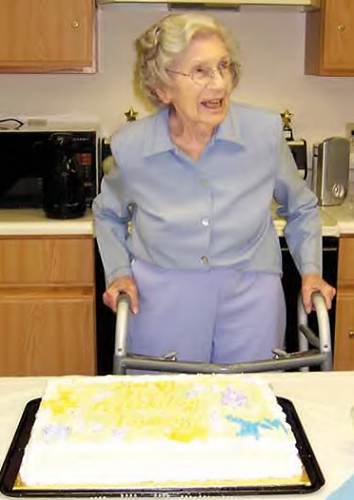
01 Deane Dowling Celebrates 100th Birthday - 26 May 2009 Although she hasn’t as good a memory as in earlier years she still was able to answer some questions for me regarding family history. Deane is the daughter of Charles Umstead, son of William Umstead, who was a brother to Sam Umstead, the subject of the narrative I will relate just a little later. Deane and I have some kin. Her grandfather on her mother Eva’s side was Henry Bear (photo 02), who was a brother to my great grandfather, David Christian Bear.
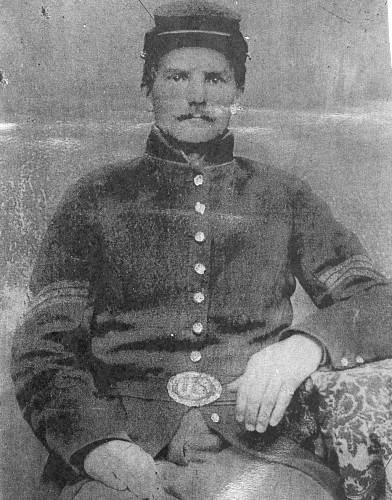
02 Henry Bear in Uniform
Click image for larger view including captionThe Bears and the Umsteads settled south of the Osage River around where Dog Creek and Coon Creek are located. I also had known two of Deane’s siblings. Her sister Hazel Umstead Humphrey (photo 03) was one of my teachers at Tuscumbia High School and her brother, Fred Umstead (photo 04), was the coach when I was there.
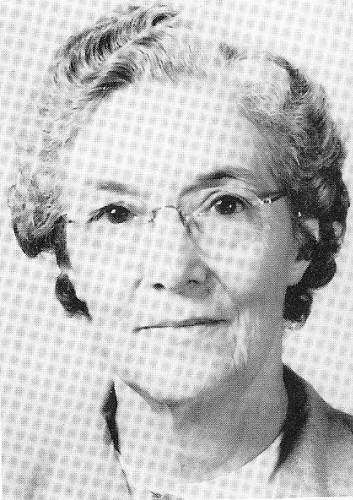
03 Hazel Umstead Humphrey
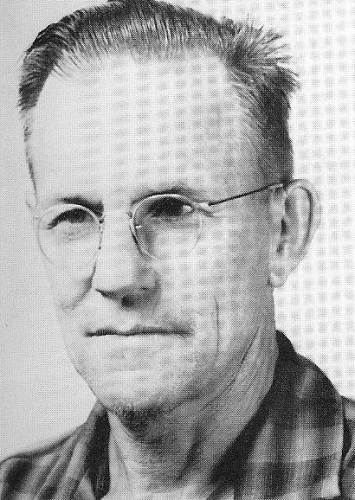
04 Fred Umstead These three siblings’ great uncle, Samuel Umstead (photo 05), who was a brother to their grandfather, William Umstead, was one of Miller County’s most engaged soldiers in the Civil War fighting for the North in the Tenth Missouri Calvary.
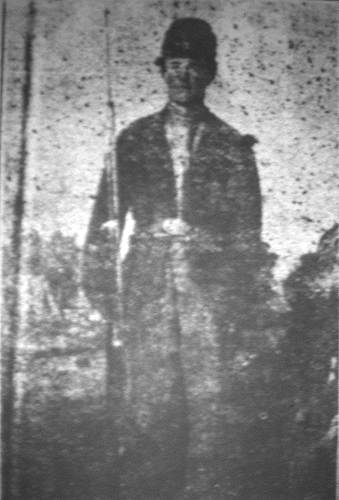
05 Samuel Umstead An article published in the Miller County Autogram November 2, 1933 offers the following further information about Samuel Umstead:
He had numerous citations for bravery and service. He served in the Civil War as a corporal in Company C under Captain Henry C. McCullough in the Tenth Missouri Regiment Cavalry commanded by Lieutenant Colonel Frederick W. Benteen (photo 06).
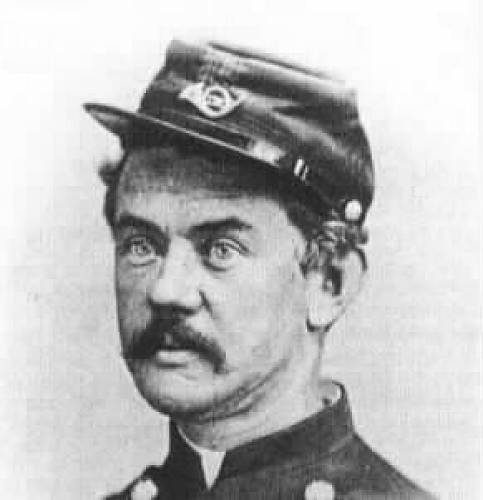
06 General Frederick Benteen - 1865 He enlisted the 13th of August, 1862, and served three years. Corporal Umstead was called by his officers the “bravest man in the regiment,” and a Washington D.C. newspaper reporting the death of Union soldiers had this to say of him: “He was the first to cross the works at Selma, and there captured a rebel flag, for which he was offered a 90 day furlough, but refused. The old flag, torn and stained with blood, is still in possession of the family.” Selma was taken by Union forces April 2, 1865.
Among the souvenirs kept by the Umstead family is a pamphlet which lists the battles in which the Tenth Missouri Cavalry took part. The list was taken from records at Washington, D.C. The record indicates that the Tenth Missouri saw a lot of hard service. The battles and the dates on which Company C. was engaged are as follows:
Arkansas Post, Ark., January 11, 1863
Barton Station, Ala., April 16, 1863
Bentonville, Mo., Feb. 19, 1862
Big Black River, Miss., May 3, 1863
_____ton’s Depot, Miss., February 4, 1864
Brice’s Crossroad, Miss, June 10, 1864
Brownsville, Miss, October 15 and 16, 1863 and October 22
Canton, Miss., Sept 28, 1863 and Feb. 24 and Mar. 2, 1864, Feb. 24 and Feb. 4, 1864
Cherokee Station, Ala., April 17, 1863
Chickasaw Bayou, Miss., Dec 27, and 28, 1862
Chickasaw Bluff, Miss., Dec 29, 1862
Clinton, Miss., October 17, 1863
Columbus, Ga., April 1`6, 1865
Courtney’s plantation, Miss., April 11, 1863
Danville, Miss., June 6, 1864
Dickson Station, Ala., April 19 and 23, 1863
Florence, Ala., May 28, 1863
Glendale, Ala., April 14, 1863
Great Bear Creek, Ala., April 17, 1863
Guntown, Miss., May 4, 1863 and June 24, 1864
Hamburg Landing, Ala., May 29, 1863
Hendricks, Miss., Sept. 15, 1863
Holly Springs, Miss., Aug 27 and 28, 1864
Hunnewell, Mo., Jan 3, 1863
Iuka, Miss., Sept. 16, 1862 and Jul 7, 18163
Jackson, Miss., July 29, 1863
Lauderdal Springs, Miss., Feb. 16, 1865
Leighton, Ala., April 24, 1863
Little Blue, Mo., Oct. 21, 1865
Little Osage River, Kan., Oct. 25, 1864
Livingston, Miss., March 27, 1864
Loudon Lane, Ala., April 25, 1863
Montevallo, Ala., March 13, 30 and 31, 1865
Montgomery, Ala., April 12 and 13, 1865
Morton, Miss., February 7 and 8, 1864
Nashville, Tenn., December 15 and 16, 1864
Oxford, Miss., Aug 12, 1864
Pea Ridge, Ark., March 6, 7 and 8, 1862
Raymond, Miss, Feb. 4, 1864
Rienzi, Miss., June 6, 1864
Salem, Mo., Dec. 3, 1861
Selma, Ala., April 2, 1865 (where Samuel Umstead captured the rebel flag and was the first to cross the Confederate breastworks)
Sharon, Miss., Feb. 27, 1865
Springfield, Mo., Feb. 13, 1862
Sycamore, Ark., May 28 and 29, 1862
Town Creek, Ala., May 27 and 28, 1863
Treatwell’s Plantation, Miss., Oct 20, 1863
Tupelo, Miss., May 6, 1863 and July 13, 14 and 15, 1864
Tuscumbia, Ala., Feb 22, ….
Big Blue, Mo., Oct. 23, 1864
Boland, April 23, 1863
Union, Miss., Feb 21 and 22, 1864
Union Station, Tenn., Nov. 1 and 4, 1865
Vicksburg, Miss., May 18 and July 4, 1863
Waddell’s Farm, Ark., June 12, 1862
Wet Glaze, MO., Oct 13, 1861
Wilson’s Creek., Mo., Aug. 10, 1861
Yazoo City, Miss., Oct 31, and Sept 27, 1863
The impressive list of the battles above was copied in full just to affirm that the Tenth Missouri Calvary surely must have seen more action than most units in the Civil War.
However, the story of the Tenth Missouri Calvary is incomplete without making further reference to Lieutenant Colonel Frederick M. Benteen who was in charge of the unit. He was considered one of the most brilliant officers in the Civil War and afterward as well during the Indian Wars out west.
But the traits which made him so potent also were ones which got him in trouble with other officers, most specifically General Custer at the Battle of the Little Big Horn. I recommend that at some point you take the time to read about this very effective but sometimes irascible officer at the following websites:
http://en.wikipedia.org/wiki/Frederick_Benteen
http://www.arlingtoncemetery.net/wfbentee.htm
One of the battles mentioned in the above list and which one finds regularly included as one of the major battles in Missouri was the battle at the “Wet Glaze” as it was called then.
(Note: for a detailed discussion of the “Dry and Wet Auglaize” go to this website: Grandglaize Creek - Wikipedia)
Clyde Lee Jenkins lived long enough ago that he compiled first hand accounts from several participants of the battle at Wet Glaze which occurred in both Camden and Miller County:
Battle of Wet Glaze (Auglaize)
Judge Jenkins’ History of Miller County p. 402
By Clyde Lee Jenkins 1971
Secession forces moving South under Wright, Thurman, Bell, Fair, Hawthorne, Churchill, Summer, and others, rendezvoused on the Wet Auglaize creek in the first weeks of October, Colonel M. Johnson commanding the entire forces. They intended to check the advance of the Federal Army on the Waynesville Lebanon road, and might have succeeded had not one of their captured sentries revealed the location of Secesh (slang for Secessionist) troops hidden in the brush.
Brigadier General J.B. Wyman, commanding the First Brigade, first Division, Western Department of the Army, reported putting his command on the march at 7 o’clock on the 13th, with Major W.D. Bowen, commanding First Battalion Missouri cavalry in front, Lt. Colonel Gorgas, commanding the 13th Regiment Illinois Volunteers in the middle, followed by the commissary department, and Major Clark Wright, commanding Fremont Battalion of cavalry, bringing up the rear. “Reports from my scouts during the night induced me to believe the enemy might attack us during the day,” Major Clark Wright said, but “nothing of importance occurred until we reached Justice Remington’s, where we learned 2nd Lieutenant Henry Laughlin, of rebel Johnson’s command, having come home, lived about a mile north, having a lot of McClurg’s goods in the house. I detached Captain Crockett, with his company, to take the lieutenant, and search the place.”
Major Bowen, in the advance, after traveling some 3 miles contacted the enemy. “Our skirmishers report a large body of the enemy in our front,” he said. “I immediately ordered Company B to the right of the main road, Company C to the left, Company A to advance.”
Within less than a mile Bowen’s Company A took after about 40 of the enemy in full retreat, pursuing them some 3 miles, when the enemy stopped and formed a line of battle. After the first fire, Bowen’s men charged in and dispersed the group, pursuing them approximately a half mile further. At Monday’s Hollow, Major Bowen discovered his 40 men of Company A surrounded by 1000 of the enemy; hastily retreating.
At this point, Company B and C coming up, and Major Clark Wright, with Captains Switzler and Montgomery appearing, surveyed the enemy in a formidable position on a hill covered with trees which concealed their movements. Major Wright circled to the right of the hill, Major Bowen to the left. Brigadier General Wyman and Lieutenant Colonel Gorgas having arrived with one company of cavalry and five companies of infantry, marching nearly five miles in 45 minutes, advanced upon the center.
The Secesh forces were routed, the Federal cavalry driving them nearly 12 miles toward Lebanon.
Brigadier General M.B. Wyman ordered proper and respectable arrangements made for the burial of the dead left upon the field of battle before being devoured by swine, beasts of prey, or vultures.
Major Clark Wright reported as “near as we could ascertain without occupying too much time to hunt through the bush, rebels killed were 27, mortally wounded 43, severely wounded 5, slightly wounded 3, prisoners 36, horses 2, guns 81…mostly old shotguns and rifles which were doubled around black jacks on the field. Officers and men agree there were many more killed and wounded, but we did not hunt them up. Our loss was 1 killed, and 2 horses slightly wounded.”
William Shelton Watkins, of Miller County (Confederate sympathizer), was carried from this field of battle, to his wife Mary Jane, in the Hickory Point community. Colonel William W. Summers, Lieutenant Laughlin, six non commissioned officers, and others killed by Federal troops, unless carried away by friends or relatives, were buried in mass graves upon what may be known as the Bob Oursbourn farm in Camden County
Seven men besides Watkins, killed in this battle, also were buried in Miller County. On October 14, 1861, early in the morning, widow Roseanna Carlton, upon hearing horses a whinnying at her yard gate, and peering outside, observed seven horses standing at the fence, heads over the top railing, intently looking toward the house, begging for attention, asking for someone to come and get them. Upon each horse a man was sitting, crumpled in the saddle, hands tied to the saddle horn, feet tied under the animal’s belly, dead.
Separate mounds of rock on the old Carlton place near the Grand Auglaize creek, later owned by George S. Wright, now in the Kaiser State Park, marked seven graves for many years.
William Shelton Watkins, who, as described above was taken dead back to his home in the Hickory Point area, was a southern sympathizer. He has an interesting story as told by Peggy Hake:
WILLIAM SHELTON WATKINS
William Shelton Watkins was a Confederate soldier, born in Kentucky in 1829. As a young man, in his early 20s, he went to the state of California at the time of the Gold Rush about 1849-50. On his return home, he boarded a ship and sailed around Cape Horn and visited with relatives in Virginia when the ship docked. In 1853, he moved westward and settled in Miller County, Missouri. The same year he married Mary Jane Livingston in Kentucky (perhaps Hart County where the Livingston family lived) and they became parents of five children….four sons and one daughter.
Their children included:
1. James Bolin Watkins 1855-1916 m. Bathonia B. McCubbin 1877
2. Perry M. Watkins b. 1857 m. no record found
3. Bird Taylor Watkins 1858-1934 m. Mary A. Hughes
4. Emmett G. Watkins 1859-1921 m. Louisa Jane Bradley
5. Loretta S. Watkins 1861-1956 m. William S. Irwin 1881
During the early days of the Civil War, William joined a military company called "W. R. Wright's Company". This man was known throughout the county as Rankin Wright. William Watkins served in John Ray's regiment of the Wright Company and the men of this company were ready to defend southern institutions to the bitter end. William Rankin Wright was the leader of Confederate troops in the central Missouri area during the Civil War, but some family legends say that William Shelton Watkins fought for the Union Army.
William Shelton Watkins was killed in a skirmish on 13 October 1861. The skirmish took place near the source of the Tavern Creek just over the line in Pulaski County to the south. At the time of his death, he was 32 years old. William was a Mason and he was a member of the Baptist Church, which was probably the old Hickory Point Church because it was in that area that he settled and lived before the War.
NOTE: Once again, family records say William Watkins was killed at his home by bushwhackers. He was buried in the yard of his homestead and a marble slab was placed at his gravesite. This happened in the Hickory Point community and many years later, he was moved to the Hickory Point Cemetery and buried beside his wife, Mary Jane.
It is legend that William Watkins brought gold back from California and secretly buried it on his land before going off to fight in the Rebellion. He did not tell anyone where it was hidden, not even his wife. For years many people have searched for his treasure, but if it existed, it is still safe somewhere under our Miller County soil!
Continuing with the article cited above (published in the Miller County Autogram November 2, 1933) gives more detail about some of the war souvenirs and memorabilia kept by the Umstead family which belonged to Samuel:
“Among the Samuel Umstead collections kept by the family are two pieces of Confederate currency. One is a ten dollar bill and the other a two. The first is printed on both sides while the latter is printed on one side only and reads as follows: “Six months after the ratification of a treaty of peace between the Confederate States and the United States, the Confederate States of America will pay TWO DOLLARS to bearer. Receivable in payment of all dues except export duties. Richmond, June 2, 1862., C.R. Meade for Register. R. Overton for Treasurer.”
Perhaps the item which would be of interest to most is a four-cylinder derringer, which was carried through the Civil War by Colonel Benteen and presented to Samuel Umstead in 1867. Colonel Benteen arrived with his men at the scene of the battle of Little Big Horn too late for the battle which resulted in the massacre by the Indians of Gen Custer and his entire force.
Note: the late arrival of Colonel Benteen to the Little Big Horn was controversial. It is discussed in the two web sites I listed above about Benteen.
The inscription on the derringer shows that it was patented by “C Sharps, Philadelphia, 1869.” A unique feature is the cap-bursting portion of the hammer, which revolves while the four barrels do not move. Four shots could be fired in rapid succession, perhaps just about as effectively as a present-day cylinder revolver.
Two highly prized pictures in the lot are tintypes, one a photo of Corporal Umstead in his uniform and with his army musket by his side. The other is a picture of the old Tuscumbia ferry-landing about the year 1870. The picture was taken from the north shore, looking to the south. Several covered wagons are seen in the picture, and numerous other wagons may be seen. In that day several warehouses were located on the South bank, and the bottom was yet heavily timbered. Old timers recall that large caravans were often camped on the south bank since great quantities of merchandise destined for Springfield and Southwest points were unloaded from flatboats here and hauled overland in wagons from there.
Note: Here is a photo of the ferry landing at Tuscumbia taken later than the one mentioned above. In the photo the steamboat Frederick is pictured (photo 09):
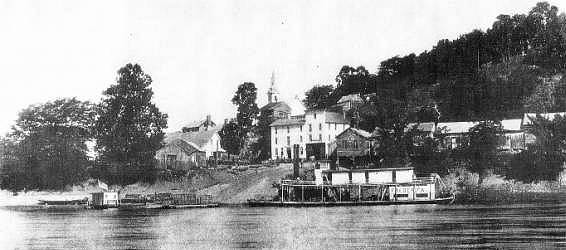
09 Ferry Landing at Tuscumbia - 1890 A document prized by the Umstead family is a copy of the genealogy of the Umstead family which demonstrates how names originate and how they change from time to time. The genealogy, which shows the family to be of English origin, is as follows:
“Parish of Elmstead in the Hundred of Tendring, Essex. First mention of the family name occurs in ‘Doomsday Book’ for the County of Essex in the survey made under William the Conqueror in 1086. The same is Saxon “ELM’ and ‘STED’ the “place of Elms.’
“Olmsted Hall was occupied by the Olmsteds two hundred years before the Puritan expedition. IT stands in the most northern part of the Parish of Bumsted-Helion near Castle Camps and Ashdon. It is grey stone with reddish brown tiled roof and red chimney.
“The Coat of Arms was found in the study of the Rector of Dimmington who was born about 1580. He was a native of Felsted, County Essex, England, the headquarters for the Elmsted after they left Olmsted Hall.
“The motto of the family is: ‘Bes vivit que bene’—(He lives twice who lives well.)”
Samuel Umstead and his father, Henry Umstead, lived in Tuscumbia in the seventies, and Mrs. Hodges was born here. The James Pinkney Wright residence, in the east part of Tuscumbia, was built by the Umsteads in the seventies. It was purchased by James Pinkney Wright from Mr. Lesem about the year 1880. It is now owned by Tennyson Clay Wright and is still in a fair state of preservation.”
Note: don’t forget that this article was written in 1933, so Tennyson Clay Wright was still alive then, having passed away in 1949.
After the war, as mentioned in the last paragraph above, Samuel lived in Tuscumbia. The house is still standing (photo 10).
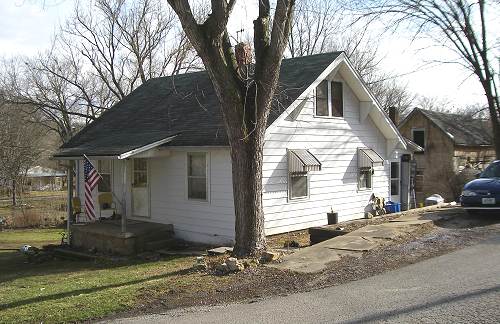
10 Wright Umstead Home According to microfilm records kept at a unit of the University of Missouri at Rolla, known as WHMC (Western Historical Manuscript Collection) website, Samuel was recorded as being involved in local Tuscumbia activities after the war, having assumed a more peaceful life than what he and so many others experienced during the War Between the States:
Tuscumbia Lodge No. 305 received its charter on 8 September 1873 and held its organizational meeting nine days later. Rodolphus Goodrich, Samuel Umstead, Edward L. Cummings, John D. Weitz, and Henry Bradlyford were charter members. Goodrich and Umstead served among the first officers of the lodge; later Philip F. Hauenstein, Charles V. Wells, D. H. Kouns, and T. A. Mooney filled posts as officers. During its first year, the lodge met weekly in the Masonic Hall.
The records of the lodge consist of two minute books. The volumes contain minutes of meetings from 1873 to 1903, but there are several lapses during this period. There are no records for September 1874—October 1879 or October 1881—June 1895.
So we don’t know a lot about Samuel Umstead other than that offered above. But he can be said to have been an exemplary soldier for the Union forces having been in many campaigns for several years and was judged to have been a heroic combatant according to his peers and commanding officers. Then in later life he is recorded as having been an active and important part of community life in Tuscumbia. Finally, that house in Tuscumbia built either by Sam Umstead or his father Henry, although perhaps not outstanding architecturally or by size, has a lot of history. My mother remembers when the Wrights lived there, in particular James Pinckney Wrights’ wife, Carrie Wright, who was the local milliner during the early part of the last century.
Construction on the new Osage River Bridge has been slowed during the winter due to the terrible weather conditions experienced here as well as in most of the rest of the country. Last week I went down the hill to the bridge site to take some photos. This first photo is of the new entrance highway to the new bridge from the north end (photo 11).

11 New Tuscumbia Bridge Entrance Road from North The second photo is of the old Tuscumbia bridge entrance road from the north (presently still in use) (photo 12).

12 Old Tuscumbia Bridge Entrance Road from North Next is a photo of both roads taken from in between (photo 13).
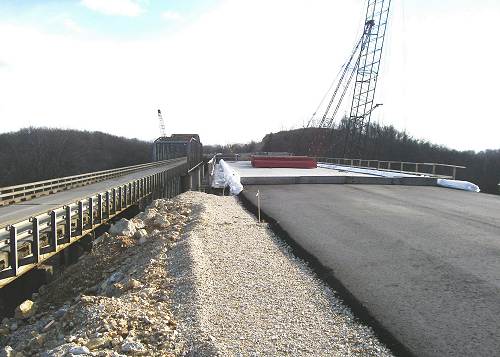
13 Tuscumbia Bridge from North - Old and New Road Here is what it looks like under the new bridge where you can see the new piers and understructure detail (photo 14).

14 Tuscumbia New Bridge Understructure The next three photos are of the bridge taken from the north on top of Goodrich Hill, the first soon after the bridge was built in 1933 (photo 15), the second was taken in the late forties (photo 16), and the third more recently was taken in 2007 using a telescopic lens to get a closer view (photo 17).
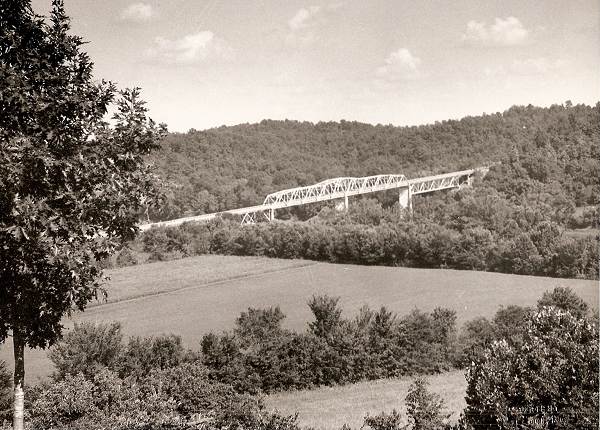
15 New Bridge at Tuscumbia - 1933 taken from Goodrich Hill
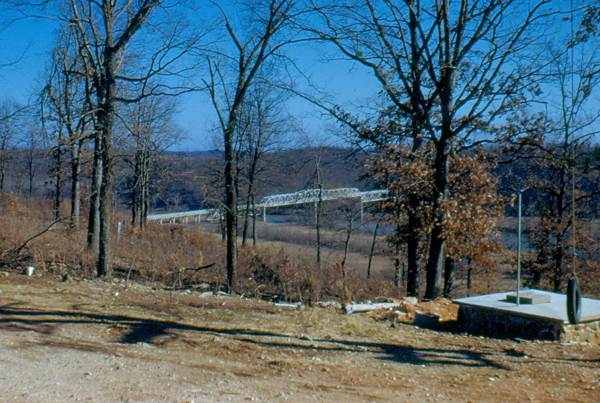
16 Osage River Bridge from top of Goodrich Hill Looking South - Late 1940's
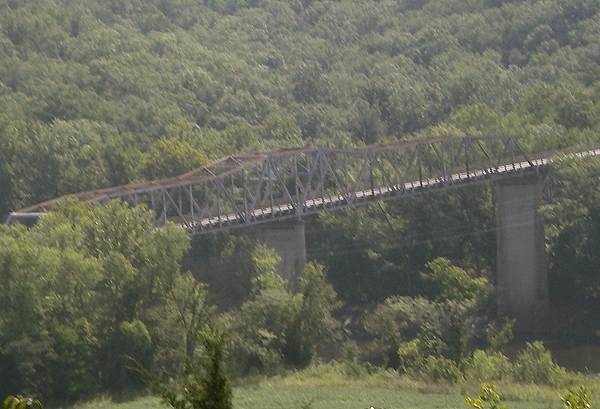
17 Osage River Bridge - Sept. 09, 2007 One can certainly suspect that in recent years the bridge has not been well cared for because the photos of the bridge in 1933 and the late 40’s compared to the one taken in 2007 reveals that it had not been painted in recent years, something that most everyone knew who crossed it regularly.
Another couple of photos taken from the south end of the bridge also is interesting. In the first one taken in the late 1940’s you will notice that the bridge superstructure is in good condition, recently painted without rust (photo 18).
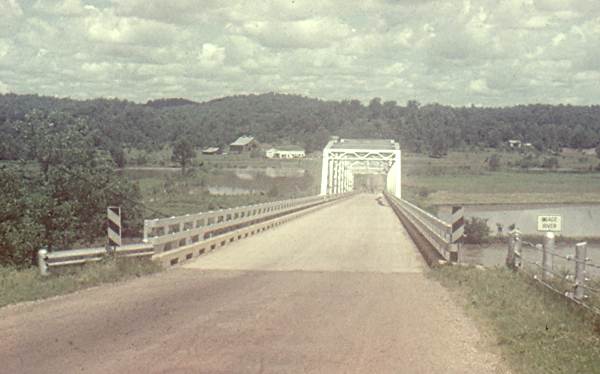
18 Osage River Bridge from South - July 1947 Especially notice that the concrete base underneath the railing is in good shape and not crumbling away. Contrast these features with the recent photo of the bridge from the same vantage point (photo 19).
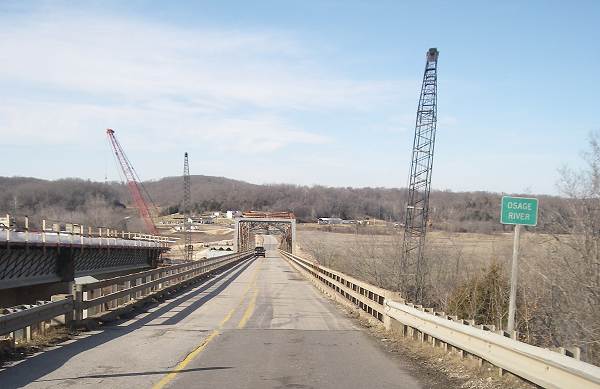
19 Tuscumbia Osage River Bridge from South - Jan. 2010 You will notice that the concrete base is crumbling away, the superstructure is rusted and the roadbed is in some degree of disrepair.
Photo 18 of the bridge from its south approach was taken by my father in the late forties. At the base of the hill in the background left of the bridge are buildings no longer present which belonged to Wiley Berry who owned the farm at that time. He had purchased it as part of the original Goodrich properties which included originally most of the land on the east and north of Tuscumbia. On the right side of the bridge in the background is a building also gone which was the home of James Harrison Senior. I say Senior because he had a son with the same name who was referred to as “Colonel Harrison”. James the son returned here after retirement from the service after WWII and was a very community minded person. On the left the white building was a service station owned by several people.
The first owner of the station was Wiley Berry who owned the entire farm. He then leased it to Wade Willams of the Brumley area for awhile. Later, Sid Reed of Ulman bought it from Wiley and managed it for quite a few years. Since that time it has passed through several owners and now is owned by an outside interest.
In 1952 my father and Uncle Ansel Pryor bought the farm from Wiley Berry. Later my father bought Ansel’s half. I spent those years helping dad with the cattle and various other chores of unskilled requirements. He was proud of his Herefords but they always took off for the woods when they were calfing (photo 19c).
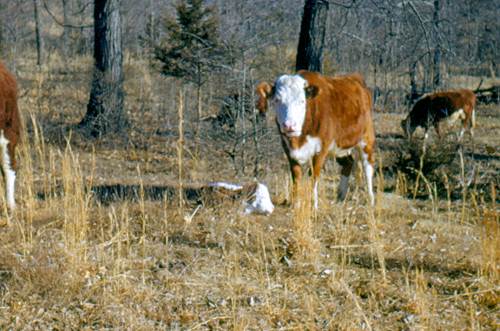
19c One of Dad's Hereford Cows and Calf So in the mid fifties he changed to Black Angus because they hung around the barn field and you could find them close by during calving season. In this next photo of the field close to the barn you can see the old original farm home behind the trees (photo 19d).
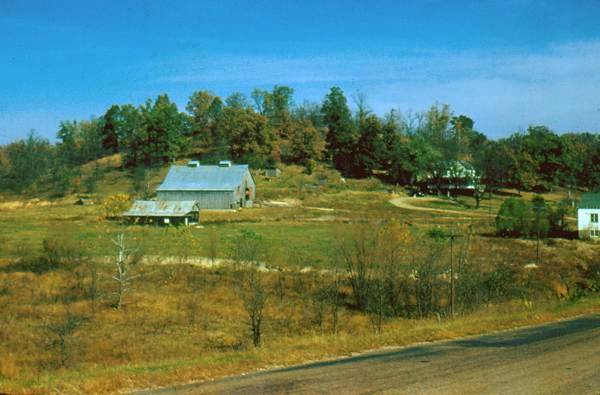
19d Pryor Farm - 1952 Wiley Berry lived there when we bought the farm. I’m not sure which Goodrich lived there before Wiley Berry bought the farm. The main Goodrich home was up on the hill later known as the “Picken’s Home” (photo 19e).
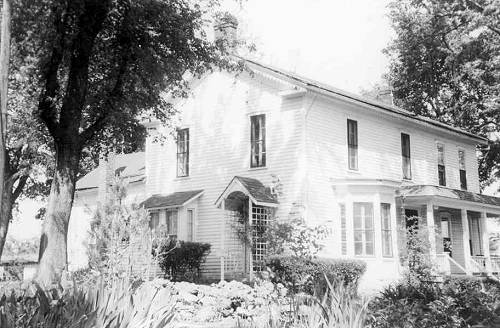
19e Goodrich Picken's Home Subsequently, this home was purchased by Doctor Humphrey for use as his medical clinic to which he later added a small hospital.
Both fields on either side of the north end of the bridge also were part of the original Goodrich farm. They had rich bottom ground dirt and when no floods occurred produced large harvestings of beans and corn. In those days we were limited to an allotment of forty acres of wheat by the government for some reason I don’t remember. Lloyd Slone did our cultivation work. He was a good farmer. Lloyd lived a long time passing away in 2007 well past ninety years of age. He was the last living person who helped build Bagnell Dam (photo 19e1).
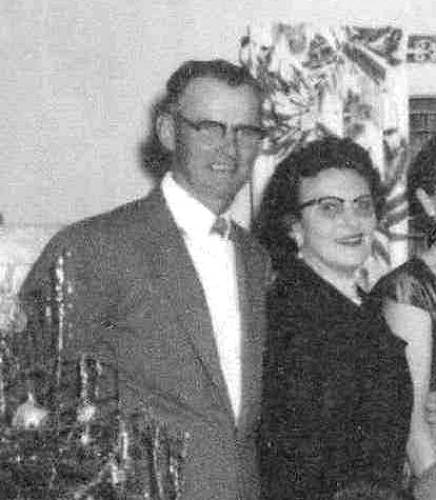
19e1 Lloyd and Wilma Slone About this time the Tuscumbia Saddle Club was formed. I had a lot of fun in those days with my horse Pal running the stakes and barrels (photo 19f).
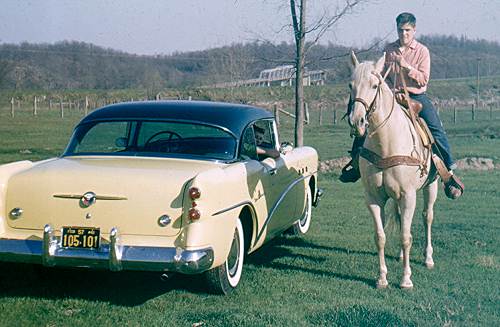
19f Pal and Joe - Mom in Car I wasn’t old enough to get into bulldogging and wasn’t skilled enough to lasso a steer (here is an entry in the Autogram about the formation of the Tuscumbia Saddle Club (photo 19g).
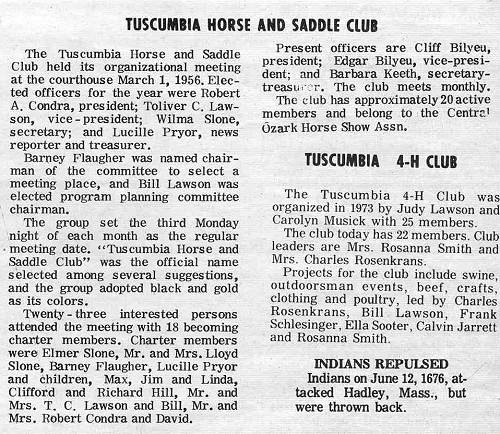
19g Saddle Club and 4-H Club
Click image for larger viewI used Pal occasionally for real work, usually riding the fence line to find the holes where Jim Harrison’s cows and hogs were getting through (that was before Willard built the fence... see below). One time we did a cattle drive. Max, my cousin and one or two others got involved. We were moving some of my Uncle Fred Pryor’s cattle from over on Catfish road down to our farm at the 52/17 junction. Things went along ok until we got to town and the cattle stopped following the road and started meandering through the town folks’ back yards and gardens. You can herd cattle with a good horse and cowboy but neither was there that day. I really don’t want to tell the rest of that story.
The worst job dad gave me was to help Orb and Otto McCaslin clean out the chicken house after one of the floods. You can read more about that in a previous Progress Notes.
Scroll most of the way down the page to find the story.
One of the things I remember about the farm was its fences. I don’t think a fence had been built since the first one which was the one present when we got the farm. Jim Harrison, our neighbor, let his hogs run loose and it drove dad crazy to have to deal with them rooting around on our property since the old fence didn’t have hog wire anyway. So he asked Willard Horton to build us new one (photo 19h).
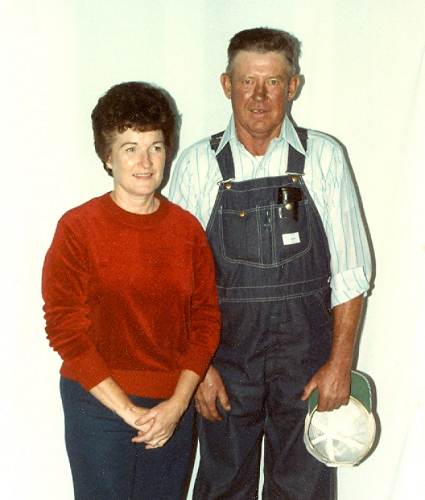
19h Imogene and Willard David Horton At that time Willard was pretty young and I remember most of all the muscles of his arms as he took the sledge hammer and drove all those wood posts around the circumference of a two hundred fifty acre farm of hills and rocks (the fencing wasn’t done around the fields on either side of the highway leading to the bridge). He was one of the strongest and conditioned men I ever knew. That fence is still standing on some parts of the farm. In fact, next time you visit the museum, walk out to the perimeter of the museum property and you can see that most of Willard’s fence is still standing. The original Goodrich farm included all the land bordering Highway 52 on the east side almost to Catfish Road. By the time my folks owned it the property line had been moved east to allow for the sale of land to various entities which wanted to build along Highway 52 including Anchor Mill, Pryor Novelty, the old highway department shed, parts of the Tuscumbia Cemetery, and to the north where several homes are located today. So the fence was moved east at various locations along Highway 52.
Here are two photos of the Tuscumbia plat map in 1905. The first one is an overview; however, you can see that I.M. Goodrich is the owner of all the land on the east and north side of Tuscumbia bordered on the west going out of town by what is now Highway 52 (photo 19i).
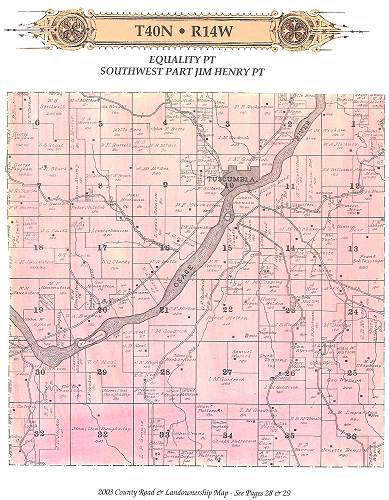
19i Tuscumbia Plat - T40N-R14W
Click image for larger viewHere is a close up of that same area (photo 19j).
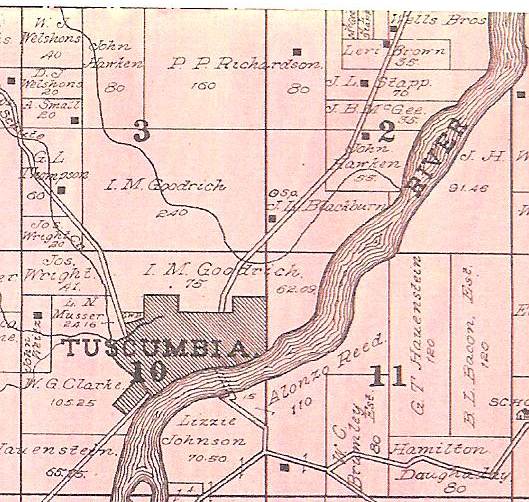
19j Tuscumbia Plat - T40N-R14W Closeup So you can see that I.M. Goodrich and his descendents were an important part of early Tuscumbia history.
Peggy Hake has recorded that family history on our website which I will copy here:
ISAAC M. GOODRICH
Isaac M. Goodrich, an early political figure of Miller County, MO., was born in New York on July 29, 1823. He had roots deeply embedded in northeast New England. His father was a native of New York and his mother was born in Vermont. Circa 1845, Isaac married Rebecca S. ____ who was born in Ohio. Their three older children were all born in the Buckeye state. Sometime in the early 1850s, the Goodrich family moved to Miller Co., MO, and settled near Tuscumbia. It did not take very long for Isaac to get involved in local politics. In 1859 he was elected assessor of Miller County. During the 1860s he served as clerk of the circuit court, clerk of the county court, probate judge, and superintendent of public schools. During the civil War, Isaac held the office of clerk of both the circuit and county courts. While the war raged on both sides of the Osage River, county government at Tuscumbia came to a screeching halt! With the assistance of Capt. Sayles Brown and his cavalry of 50 soldiers, Isaac carried Miller County's important county records to the state capitol at Jefferson City, MO., for safekeeping. For almost a year there was no county government in control. It was in the spring of 1865 that court finally convened once again at Tuscumbia.
After tenure as a county official, Isaac became a newspaperman, owning about three different newspapers during the decade of the 1870s. They were among the county's earliest newspapers called "The Sun and Republican", "The Miller County Vidette", and "The Miller County Republican".
Isaac and Rebecca Goodrich had 8 children including:
1. Margaret S. b c/1844 Ohio
2. Isaac Rodoluphus b c/1846 Ohio
3. Matilda S. 1848 - 1863
4. Sarah E. b 1853 MO. m Wm. H. Hauenstein 1872
5. Arthur F. 1857 - 1874
6. Frederick A. 1859 MO
7. Edith R. b 1863 MO m Seigel Beckner of Laclede Co., MO
8. Walter S. b 1868 MO. m Frances L. ?
In 1900, Isaac and Rebecca had been married 55 years and were living in or near Tuscumbia. The late Homer C. Wright of Tuscumbia told me at one time that Judge Goodrich's house sat on the land where the Tuscumbia Clinic (today the law offices of Kerry Rowden) is sitting. It was a stately, two-story home overlooking the Osage River that flowed in a northeasterly direction through Tuscumbia. The Goodrichs' were a prominent family of Equality Township in the late 19th century. When Isaac bought a fine, new buggy in June 1881, it was newsworthy! The news item in the local newspaper stated he had paid $130 for his buggy and it was shipped to Tuscumbia via the riverboat, "Phil E. Chapell".
Isaac died in 1911 at the age of 88 years. His wife, Rebecca, lived for two years longer, dying at the age of 91 years in 1913.
They are both at rest in the Tuscumbia town cemetery.
They also have 2 children buried at Tuscumbia.
Isaac M. Goodrich 29 July 1823 - 9 July 1911
Rebecca S. Goodrich 7 Dec 1822 - 13 May 1913
Matilda S. Goodrich 1848 - 1863
Arthur F. Goodrich 1857 - 1874
I don’t have a photo of I.M. Goodrich but here are photos of sons Frederick A. Goodrich (photo 19k) and Walter S. Goodrich (photo 19l).
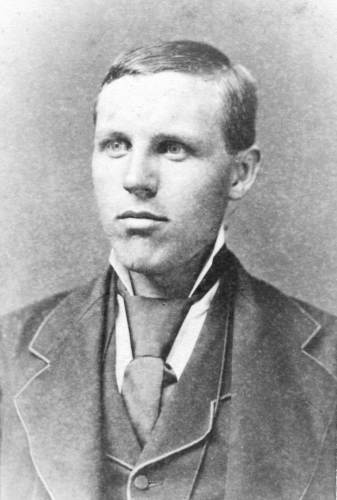
19k F.A. Goodrich
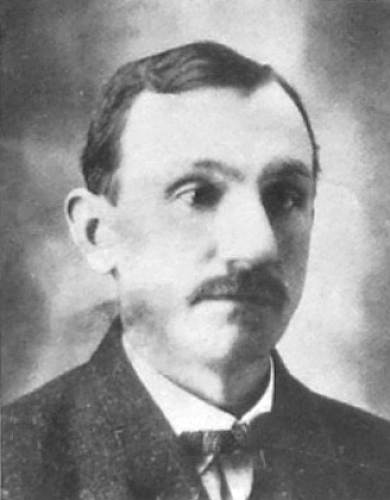
19l Walter S. Goodrich A few people today still remember the last Goodrich to live in the old house (see photo 19e above). She was Edith Goodrich Beckner, a daughter of I.M. Goodrich. These include my mother, J.C. Brockman, and Bamber Wright. At some point in time in the 1930’s the old house and property were sold to George Pickens. At about the same time the farm land was sold to Wiley Berry who moved to the big house down in the valley shown in an earlier photo. I’m not sure which of the Goodrich’s lived in that home and I’m not sure if Wiley bought the part of the he owned from the Goodrich family or from George Pickens.
In 1936, George Pickens sold a good part of the Goodrich land on the hill to the town of Tuscumbia. This transaction was described in the following article in the Autogram:
Miller County Autogram
December 10, 1936
Three Land Sales Open Way For Developments
Parcels Adjoining Town acquired By Highway Department, School District, and Cemetery Committee. Tuscumbia Heights, New Addition to Town. Also Provides Home Sites.
As a result of negotiations which have been in progress here for weeks, a number of parcels have been sold by Mr. and Mrs. G. A. Pickens of Tuscumbia Heights for public use, and a new addition to Tuscumbia, known as Tuscumbia Heights Addition, has been surveyed and lots offered for sale as building sites.
Mr. and Mrs. Pickens acquired the Goodrich acreage adjoining town about a year ago from Mrs. Edith Beckner and the parcels which they have sold are from this original tract.
The first deal was made with the State Highway Department for a parcel 118 feet wide and an average length of about 375 feet, the south line of said parcel being the north line of the Tuscumbia Cemetery. The Department is now hauling gravel and other material to this lot and will soon start the erection of a maintenance building about 30 x 45 feet in dimensions. The parcel fronts on Highway 52.
The second deal was made with the Tuscumbia School District for the sale of five acres of land adjoining and to the north of the old school property and Mrs. Martha Clark’s property; also a portion off the northwest corner of what is known as Goodrich park. The district acquired this with a view of building a new grade school house on that portion which is now a part of the park.
The third sale was made to the Town of Tuscumbia for cemetery purposes. The principal parcel for cemetery purposes is an irregular piece adjoining the old cemetery on the northwest and squares up the cemetery on the north. This parcel is 128 x 188 x 241 x 240 feet. Another parcel of about half that size and lying directly north of the old cemetery, also a small triangular parcel at the front of the cemetery, just east of the Burris burial lots, was also included in this lot. Mr. and Mrs. Pickens have deeded to Tuscumbia a roadway 30 feet wide along the east side of the cemetery from the north end of Market street at the northwest corner of the Stillwell property, northwardly a distance of more than 1,000 feet. This roadway will be known as Pickens Drive, and will give ingress and egress to the cemetery on the east and north sides.
The cemetery additions are made possible through the generosity of R.M. Marshall, who gave his personal check to Mr. and Mrs. Pickens in the sum of $200.00, which is a gift to the community. We suggest in consideration of this that the town show its gratitude by designating this the Marshall Addition to the Tuscumbia Cemetery.
Following up these transactions, Mr. and Mrs. Pickens have laid out what is known as Tuscumbia Heights Addition to town as a residential area. This is to the north of the Highway Department’s lot, and contains several nice building sites, laid out in four blocks with a total of 14 lots of various sizes. Through the center of the residential addition Pickens Drive is extended out to Highway 52, making a continuous roadway from the highway around the north and east side of the highway building site and the cemetery to the Stillwell Corner.
In honor of one of Tuscumbia’s old and respected families which formerly owned this land, a street in Tuscumbia Heights Addition has been named Goodrich.
A blue print of the lands involved and including all blocks in Tuscumbia north of Highway 52 has been filed in the Recorder’s office, as a matter of record.
These transactions will make possible some nice improvements “on the hill,” and will make available some nice building sites, beautifully situated, in one of the best little county seat towns in the Ozarks.
The Tuscumbia Cemetery committee plans to construct a new fence around the recently acquired acreage, and funds for such will probably be asked of those interested in the cemetery in order to make this possible.
One of the early purchasers of tracts of land divided up by Tuscumbia of the Goodrich estate bordering Highway 52 was Anchor Milling Company, which built its stone hardware and supply store in 1943, which now, of course, houses the Miller County Musuem. In 1948 my father and uncles (Harold, Fred and Ansel Pryor) purchased some lots to build two buildings for their cedar wood crafted souvenir business. In 1949, Anchor Mill moved its milling operation from the river bank downtown up to the Goodrich Addition next to the hardware store built six years earlier.
Missing now from this list of buildings is the Anchor Mill building which housed the old roller mill as well as the weight scales in front of the building. This plat of ground was replaced by the new Miller County Courthouse about five years or so ago. The Pryor Novelty buildings (except for the lumber storage sheds) are still present but vacant. The old highway shed is still present but not in use now; the Highway Department moved to a new building at a site on Highway 52 about a mile north of town.
Another change has been the ownership of the Goodrich farm which as described above is the one on both sides of the road leading north from the bridge and including the valley north of the junction of Highway 52/17. My dad eventually sold the farm to his brother Fred Pryor. His descendents owned it until about three years ago when by an interesting coincidence it was sold to a cousin of mine on my mother’s side of the family, Jay Shelton M.D., and two of his business associates. Jay is the grandson of Arthur Bear who was a brother to my mother.
Jay had the vision to have a huge dam built (the work was done by Layne Helton) which formed an absolutely beautiful lake (photo 19m).
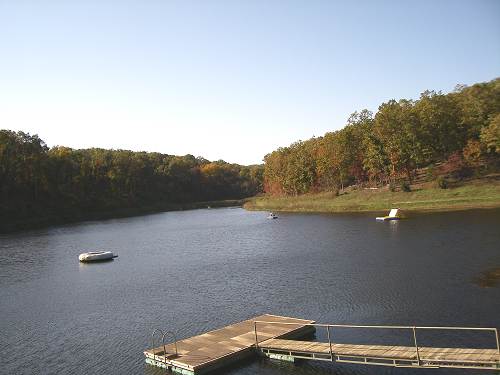
19m Jay's Lake
During the construction of the 1933 bridge (as yet still the one we are using) much interest and excitement was present in the county because this was going to be a bridge designed by engineers with all the modern techniques, equipment and materials available for its construction. The old Swinging Bridge, built by Joseph Dice of Warsaw served well enough for horse drawn wagons but was not designed for the heavy trucks with their loads that were becoming more common in the 1930’s nor was it designed for the increased amount of road traffic which was becoming heavier each year. And , of course, Joseph Dice, who was a genius at what he did, never the less, was not an engineer and the story goes that he “eye balled” every aspect of the swinging bridges he built over the streams in the Ozark area counties. You can read more about the construction of the old swinging bridge at this previous editon of Progress Notes.
The construction details of the present bridge, the one completed in 1933, were summarized in an article in the Miller County Autogram November 2, 1933. As I read the article I was impressed that the author was able to obtain such detailed information about the materials and their quantities used for the bridge construction. Someone either in government oversight or in a very well run private company kept very good records. You can read that article as well as much more about the 1933 bridge, the one we are still using now, at this previous Progress Notes for March 16, 2009.
You can also read about Avery Baucom of Eldon, who was the only person killed during the construction of the 1933 bridge, as well as his family at this previous Progress Notes.
This week’s entry from the diary of C.B. Wright once again gives details of the haulage of one of the steamboats on the Osage used by the Anchor Milling Company, the Steamboat Ruth (photo 20).
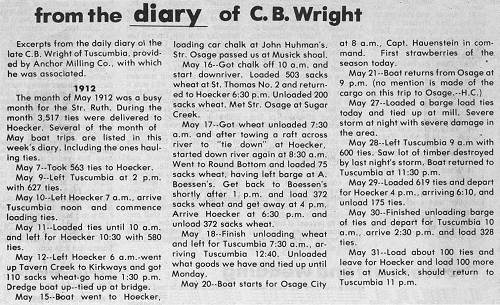
20 C.B. Wright Diary - 20 May 1912
Click image for larger viewWe have on file a story C.B. wrote about the Ruth which gives some history as well as interesting and humorous comments:
Steamer Ruth (photo 21)
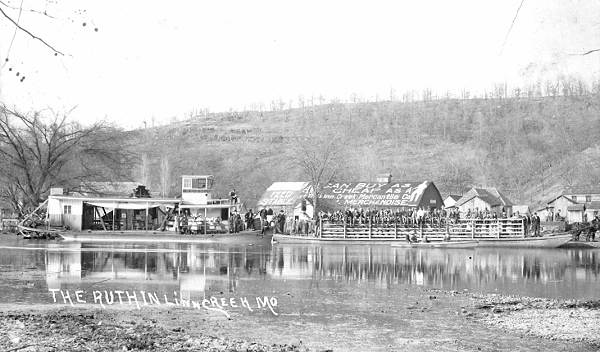
21 The Ruth at Linn Creek The steamer Ruth was a gas powered boat, using a 50 H.P. Witte engine. It had a 12 inch belt on one side and a 10 inch belt on the other. These were from engine to counter shaft on the back end of the boat. The counter shaft had friction clutches and we had, more or less, trouble with that set up. The clutches would wear down and had to be tightened some times. We seldom ever broke any belts from the counter shaft sprocket and chain belt to the wheel shaft.
The “Ruth” was not built for a freight boat, but we did a lot of business with it. We used it for ten years, from 1910 to 1920. J.R. Wells (photo 22) had the boat built for pleasure, but I don’t think he ever made a pleasure trip with it.
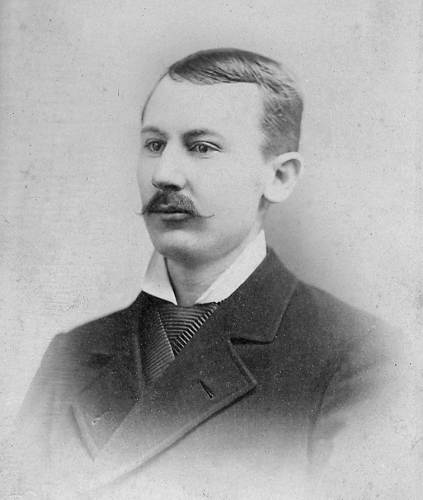
22 J.R. Wells Carpenters Dan Thompson (photo 23) and Milt Kallenbach built her at Ed Kallenbach’s blacksmith shop (photo 24).
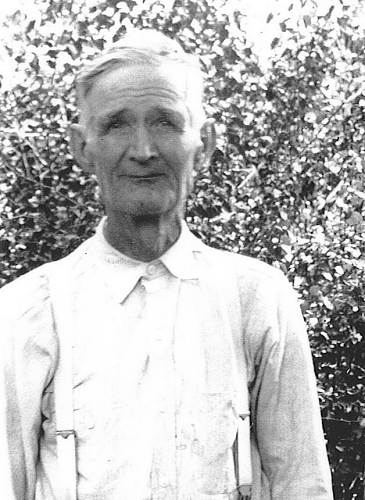
23 Daniel F. Thompson
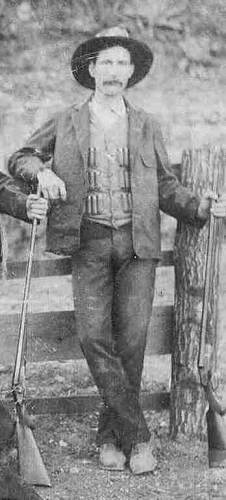
24 Ed Kallenbach J.R. Wells named her for one of his four daughters. He had the girls to draw straws, or some such plan, and Miss Ruth (photo 25) drew the lucky straw. She is now the wife of Cole County Circuit Clerk, Mr. Guy Sone (photo 26).
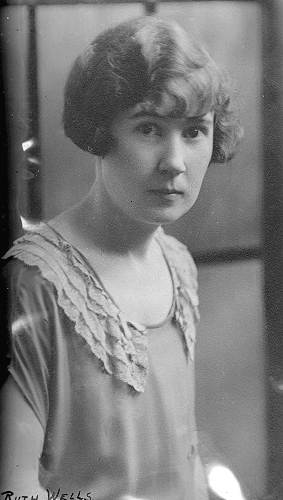
25 Ruth Wells

26 Guy Sone We had several engineers first and last. They didn’t have to have a license. The skipper, however, had to have what was known as a “Navigator’s License.” As engineers, we had Frank Wright (photo 27), Len Kallenbach (photo 28), Lon Waddell, Walter Scott and John Klug (photo 29) at one time or another .
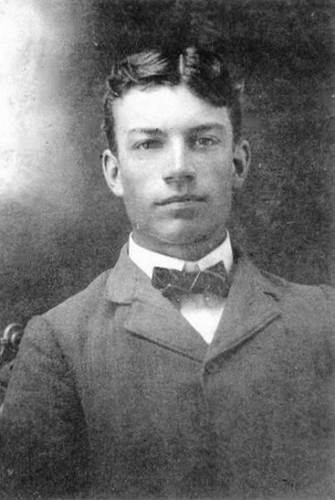
27 James Frank Wright
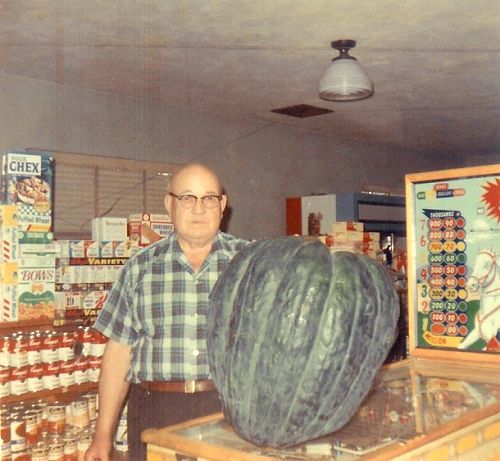
28 Leonard Kallenbach inside Store
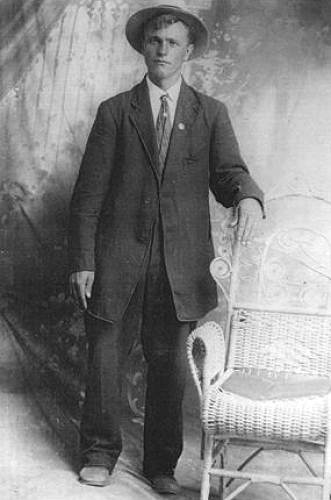
29 John Klug I think we had Walter Scott more than any of the others.
We had several good cooks on the Steamer Ruth. Will Wright (photo 29a) and his sons, Ed and Perry, and Pit Wright were cooks (photo 30).
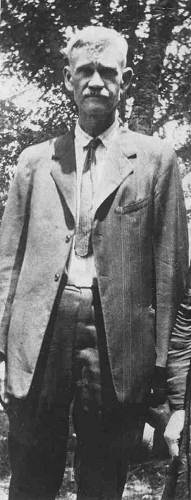
29a Will Wright
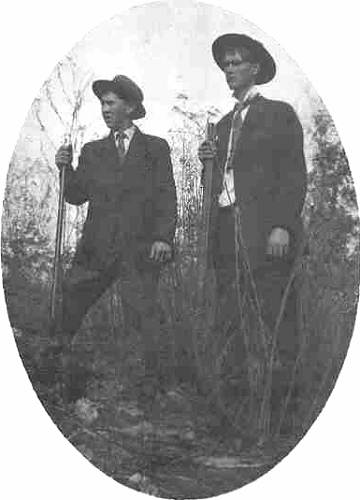
30 Pittman and Ed Wright Louis Admire (photo 31) made a trip or two and Joe Witt was another good cook .
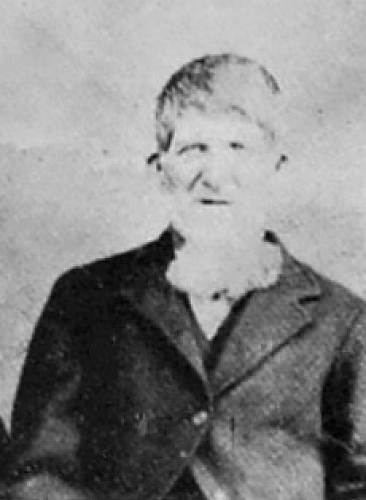
31 Louis Admire Joe did jobs for me that other folks would not touch. None of the cooks worked very long. It was not a desirable job and the cooking arrangements were not very good. Jim Walker, too. I’m not going to forget him. He was a little tricky and we had to keep an eye on him. We had catfish for dinner one time and I told the gang to go slow on the fish. Jim was present and he did like catfish, too! He never said a work or cracked a smile; and, when the gang had eaten and were out forward, I had occasion to go back to the table. Jim was eating alone and had more catfish on his platter than all seven or eight of us who ate before him. That, I call a small trick. He was inclined to smile somewhat when we took the matter up with him.
Jim’s father was fond of fish, too. I think I heard him say, onetime, that one of his neighbors ate so many fish one year that the fish bones stuck out through his hide and shirt so much that he couldn’t get his shirt off. This might sound somewhat fishy, which it is. He never had a notary public to take affirmation.
Recently, Jackie Bray of Eldon notified us that Helen Doty of Kaiser who she knows at her church, Riverside Baptist, had a very unusual antique kidskin china head doll which she was willing to donate to our doll collection. The doll was very old having belonged to Mrs. Doty’s great grandmother. Last Monday the doll was delivered to us by another member of the church, Diane Berkbigler, including as well a photo of Jackie and Mrs. Doty (photo 32).
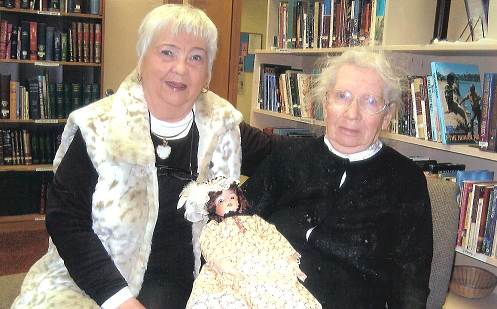
32 Jackie Bray, Doll "Ruthie" and Helen Doty We were very delighted to receive this gift; Nancy Thompson, museum director, immediately placed it in the doll display case (photo 33).
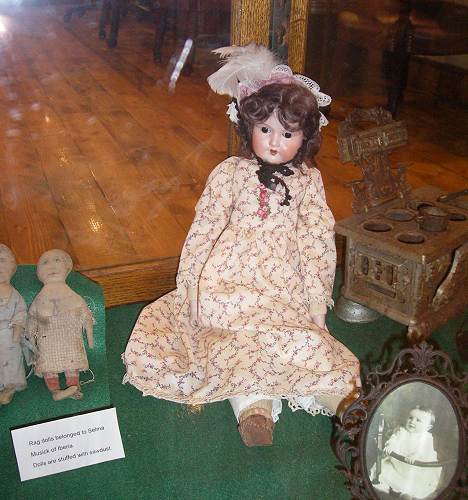
33 Doll Mrs. Doty said that these types of dolls were sometimes sent out to people or stores to display miniature dresses for the purpose of interesting women to order a full size similar dress. The heads are made of china and the torso is kidskin. The legs and arms are straw.
Mrs. Doty sent along with the doll a short history of herself and the doll:
“I was born on December 24, 1926 the oldest of eight children. My great grandmother Hines on my mother’s side, who was French Canadian, gave me the kidskin china head doll when I was five or six years old. She had named the doll Ruth and that is what we call her today. She was so pretty we didn’t play with her but kept her behind a glass door in the buffet we had at that time. And anyway we had too many chores to do for us to have time to play. I was the oldest of the eight children during the great depression so having all these babies to help with I sure didn’t need to play dolls!
My great grandfather Philip Cooper Welsh was shot in his leg when he fought in the war between the North and the South. The hole became infected and didn’t heal; he eventually died of the poison from his wound. So my great grandmother remarried because a woman couldn’t survive in those days without the help of a husband.
My father was in and out of Missouri and Kansas. My early life I was raised around Lawrence but later we moved to Missouri during the depression because my father was seeking work. We ended up down here in the Lake area. My first husband was one of the Hanks family and for several years we had a fishing camp in the state park area named Hanks Haven.”
We are very thankful for the gift from Mrs. Doty as well as the efforts by Jackie Bray and Diane Berkbiglar for getting it delivered to us.
Here is some history from Wikipedia about the “China Head Doll:”
A china doll is a doll made partially or wholly out of glossy glazed porcelain. The name comes from china being used to refer to the material porcelain. Colloquially the term china doll is sometimes used to refer to any porcelain or bisque doll, but more specifically it describes only antique glazed dolls.
Antique china dolls were predominantly produced in Germany, approximately between 1830 and 1930, with the peak in popularity between roughly 1840 and 1880, when bisque dolls took over. Companies like Beck and Gotschalck, Alt, Kestner and Hertwig made china dolls in large quantities, counting in the millions. A few earlier china dolls were made in France.
A typical German china doll has a head made of glazed white untinted porcelain, with molded hair and painted eyes. The glaze gives the doll a characteristic glossy appearance. The head is attached to a body made of cloth or leather, sometimes with arms and legs made of porcelain. Some china dolls, like the Frozen Charlotte dolls, were made entirely out of porcelain, with head and body made in one piece without any articulation. They range in size from 5 cm (2 inches) in height up to 75 cm (30 inches) with the smallest dolls often made without articulation.
China dolls were typically designed to depict grown women and were dressed in fashionable clothes. They often had distinctive contemporary hairstyles, like sausage curls, ribbons or headbands, all molded in porcelain. Beginning in 1880, china doll heads were often sold without a body, for the customer to fashion a body and clothing to their liking. Rare and elaborately decorated antique china dolls can be worth several thousand dollars on the collectors market.
Parian dolls are similar to china dolls in that their heads are made of untinted white porcelain and they use cloth bodies, but they are unglazed with a matte finish. They were mainly made in Dresden in Germany, from around 1850 to 1870.
That’s all for this week.
 Joe Pryor
|



